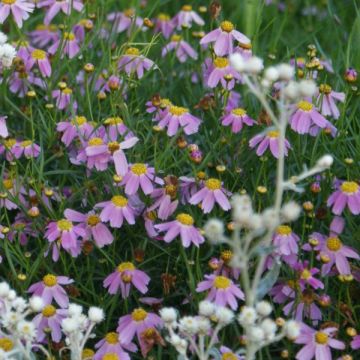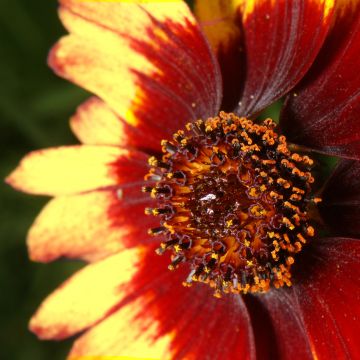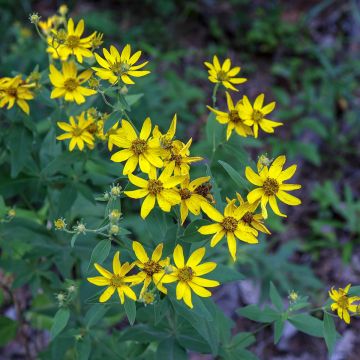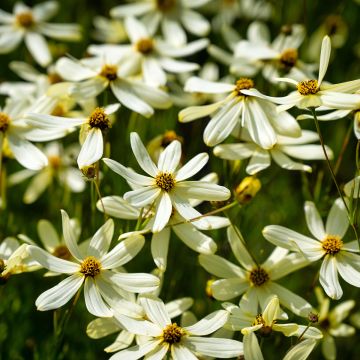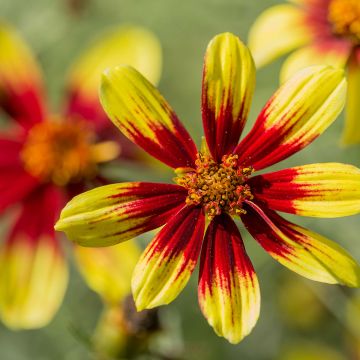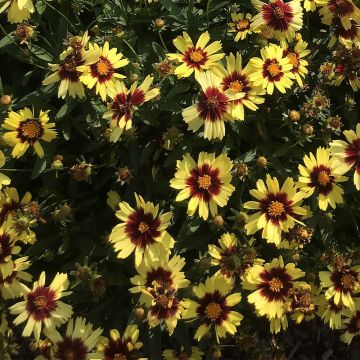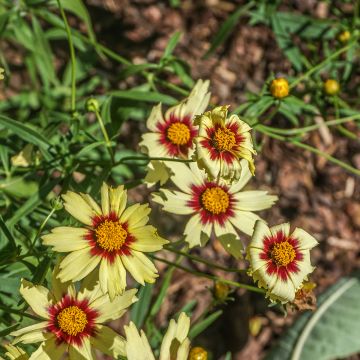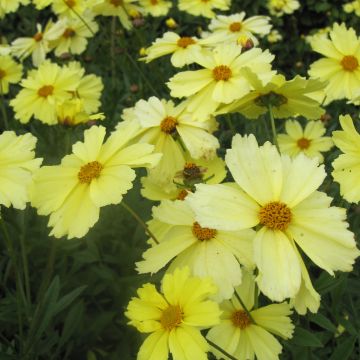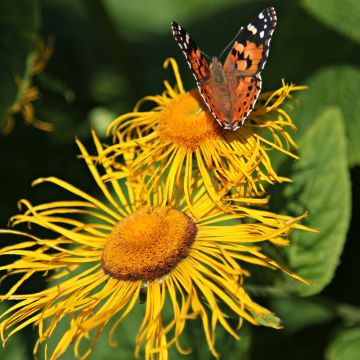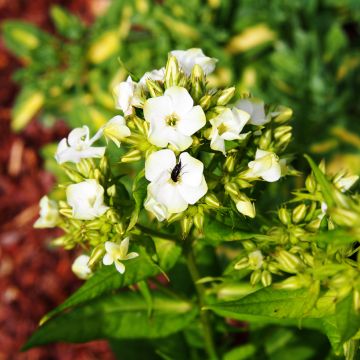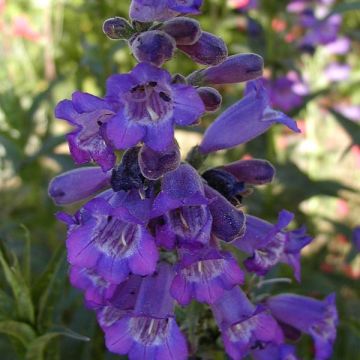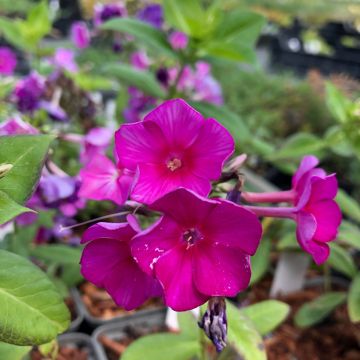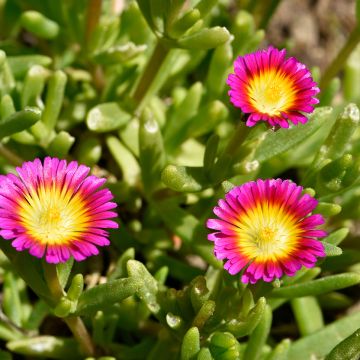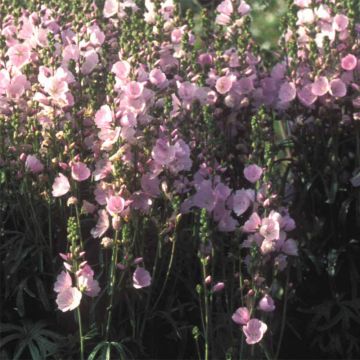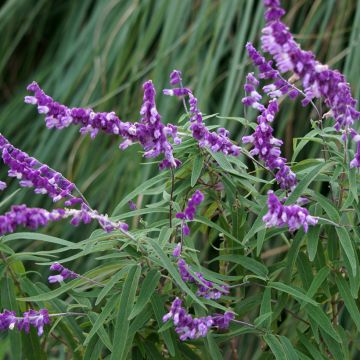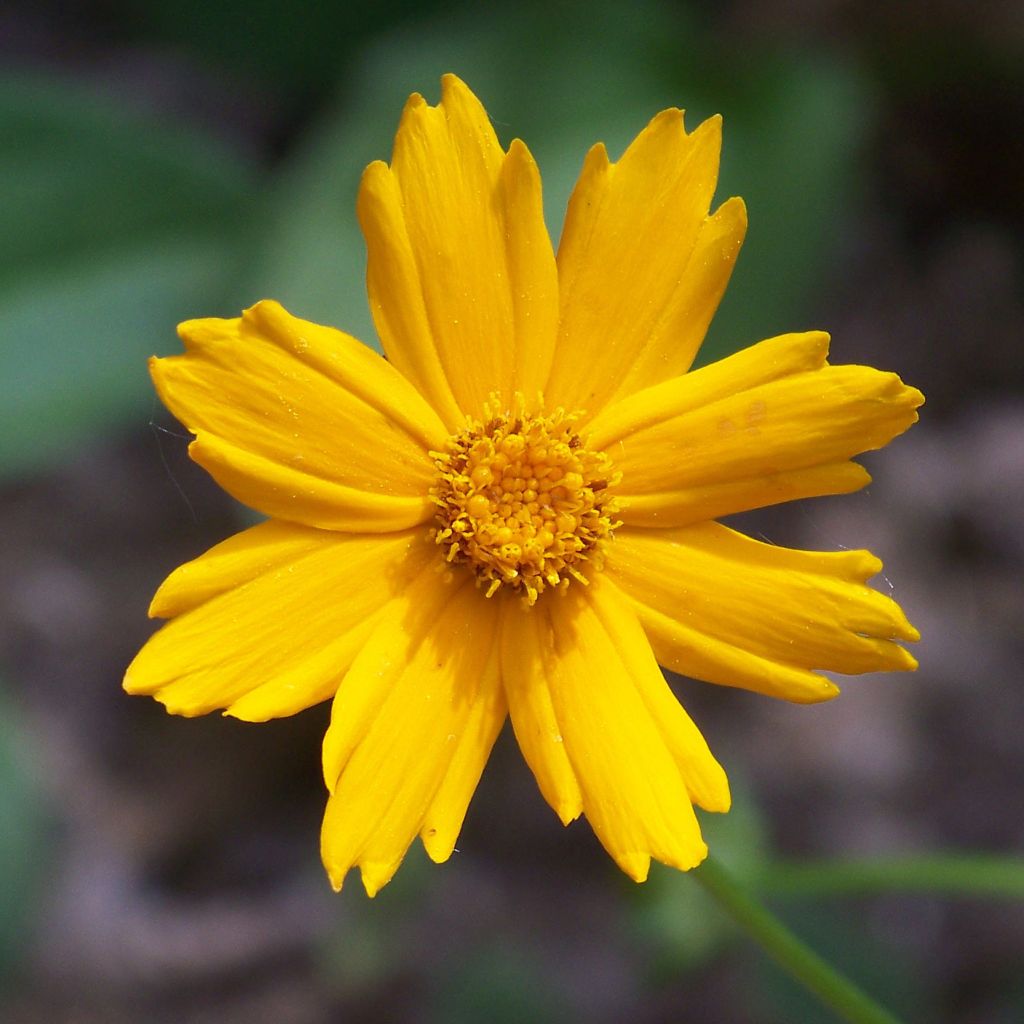

Coreopsis auriculata Nana
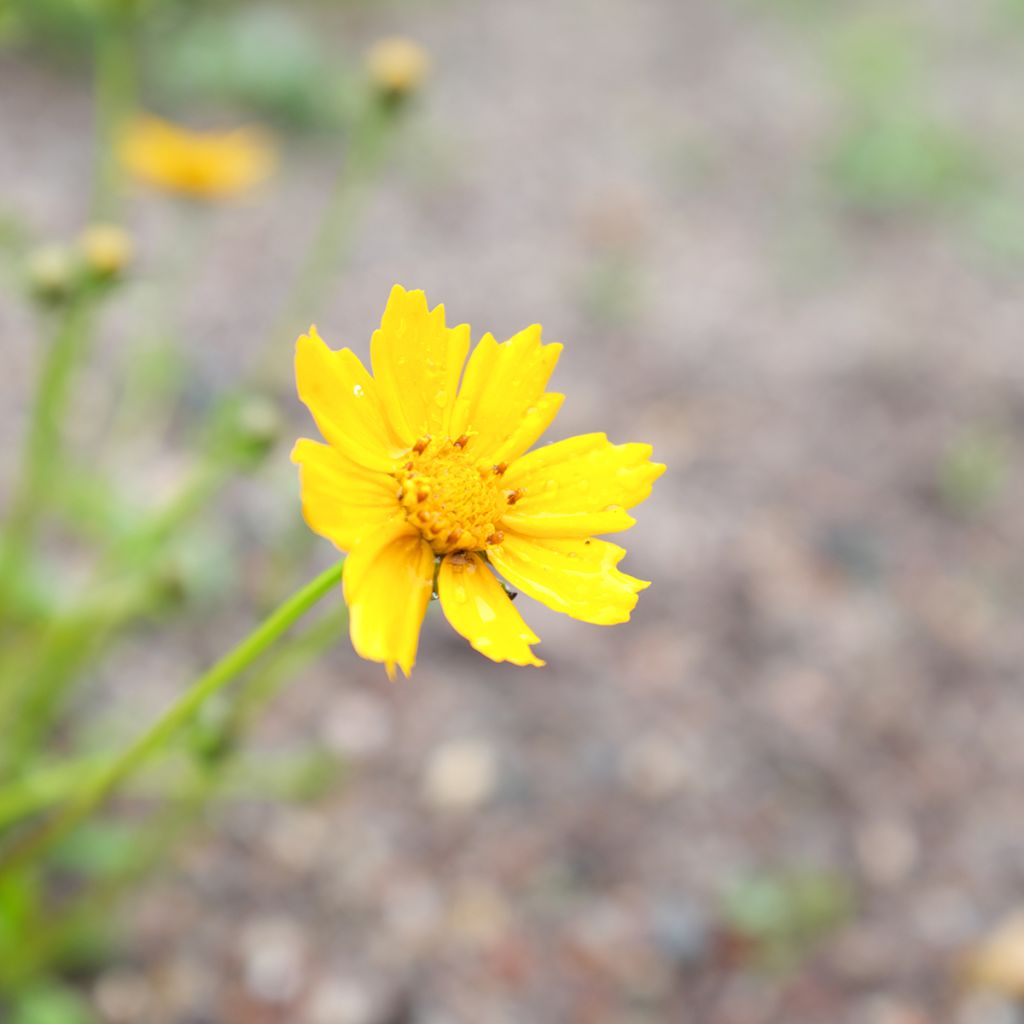

Coreopsis auriculata Nana
Coreopsis auriculata Nana
Coreopsis auriculata Nana
Lobed Tickseed, Ear-leaved Tickseed
This item cannot be shipped to the selected country
Delivery charge from €5.90
More information
Schedule delivery date,
and select date in basket
This plant carries a 12 months recovery warranty
More information
We guarantee the quality of our plants for a full growing cycle, and will replace at our expense any plant that fails to recover under normal climatic and planting conditions.
From €5.90 for pickup delivery and €6.90 for home delivery
Express home delivery from €8.90.
Does this plant fit my garden?
Set up your Plantfit profile →
Description
Coreopsis auriculata 'Nana' is a small, compact, hardy, and very floriferous perennial. It has shiny dark green foliage and an abundance of small amber-yellow to orange heads throughout the summer, except during periods of high temperatures. Its lifespan is fairly short, but it spreads and regenerates due to a stoloniferous stump. This is a generous and undemanding groundcover plant, which will easily naturalise in a rock garden or on a slope, in well-drained soil and full sun.
Coreopsis auriculata, is a short-lived perennial belonging to the Asteraceae family, like sunflowers and asters. It gets its name due to the shape of its leaves, with lobes resembling ears at the base. This hardy plant is native to the southeastern and central-eastern United States, from eastern Louisiana to Florida, Kentucky, Maryland, and West Virginia. Its origins mean that it copes well in humid heat and drought.
The 'Nana' variety distinguishes itself with a very compact habit and a smaller size that will not exceed 15 cm (6in) in height. This coreopsis blooms abundantly from early summer, but the flowering slows down during period of high temperatures and prolonged drought, only to start again in September with the return of rain or a thorough watering. It offers wide ligulate flowers of approximately 4 cm (2in), with a warm and bright hue, yellow-orange with a more amber centre. The foliage consists of shiny dark green lanceolate leaves, gathered in basal clumps. After flowering, this plant develops short non-trailing stoloniferous stems that allow it to spread in large groups, thanks to nodes that root upon contact with the ground.
Perennial coreopsis dreads winter humidity and heavy soils. These plants require full sun, even scorching sun, to flower well. They thrive in a light, porous, gravelly, or sandy soil that is always well-drained. They require little maintenance. Coreopsis auriculata 'Nana' is a small perennial with multiple uses. It will thrive in a rock garden, on a slope with wallflowers, love-in-a-mist, and wild flax, or in an herbaceous border alongside Teucrium chamaedrys or x lucidrys, thyme, and santolines. For a beautiful summer display, in the ground or in a large pot, with very little water, it can be paired with Calamintha glandulosa and Nepeta 'Dawn to Dusk'. This groundcover will effectively and elegantly edge a pathway, and keep weeds away, reducing weeding in the garden.
Report an error about the product description
Coreopsis auriculata Nana in pictures
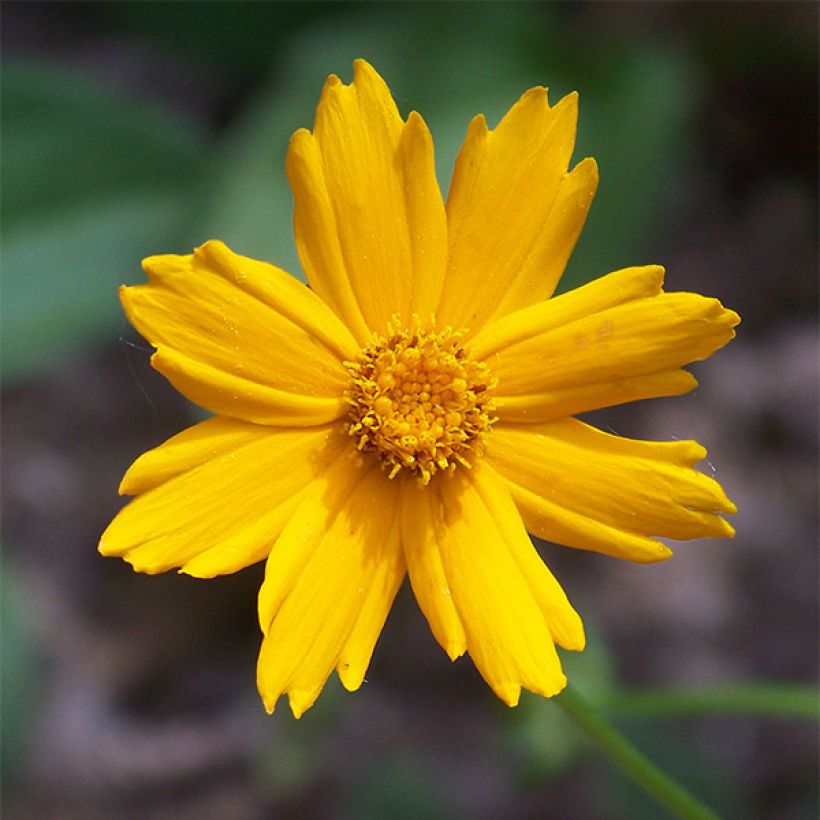

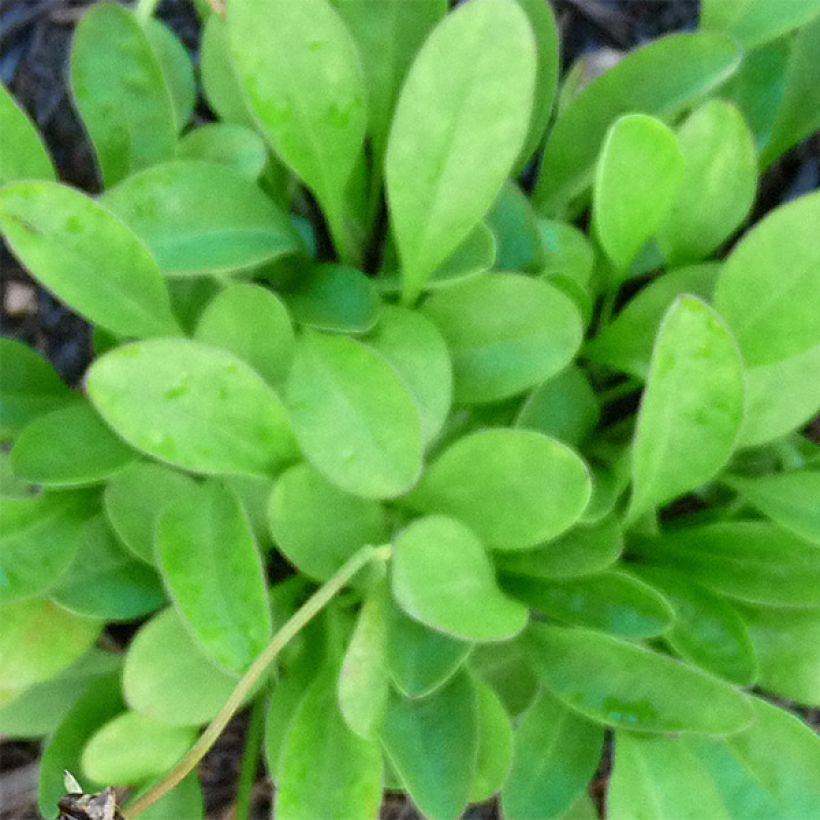

Flowering
Foliage
Plant habit
Botanical data
Coreopsis
auriculata
Nana
Asteraceae
Lobed Tickseed, Ear-leaved Tickseed
North America
Other Coreopsis - Tickseed
Planting and care
Coreopsis auriculata requires a very well-drained, sandy or rocky soil as well as full sun. In heavy and moist soil, it behaves as an annual plant. Dividing the clumps every 3 years rejuvenates them. Pruning the foliage in September strengthens the stump before winter.
Perennial coreopsis plants dislike winter humidity and heavy soils. These flowers require full sun, even scorching sun, to bloom well. They prefer a light, porous, gravelly or sandy soil, which is always very well-drained, slightly acidic, neutral, slightly chalky, even if it is poor. They will also adapt well in a humus-rich and fresh soil, as long as the drainage is perfect. In such conditions, they bloom and live for a long time. To encourage re-flowering, it is preferable to remove faded flowers, especially at the end of August. A rewarding plant that requires little maintenance.
Planting period
Intended location
Care
-
, onOrder confirmed
Reply from on Promesse de fleurs
Summer flowering perennials
Haven't found what you were looking for?
Hardiness is the lowest winter temperature a plant can endure without suffering serious damage or even dying. However, hardiness is affected by location (a sheltered area, such as a patio), protection (winter cover) and soil type (hardiness is improved by well-drained soil).

Photo Sharing Terms & Conditions
In order to encourage gardeners to interact and share their experiences, Promesse de fleurs offers various media enabling content to be uploaded onto its Site - in particular via the ‘Photo sharing’ module.
The User agrees to refrain from:
- Posting any content that is illegal, prejudicial, insulting, racist, inciteful to hatred, revisionist, contrary to public decency, that infringes on privacy or on the privacy rights of third parties, in particular the publicity rights of persons and goods, intellectual property rights, or the right to privacy.
- Submitting content on behalf of a third party;
- Impersonate the identity of a third party and/or publish any personal information about a third party;
In general, the User undertakes to refrain from any unethical behaviour.
All Content (in particular text, comments, files, images, photos, videos, creative works, etc.), which may be subject to property or intellectual property rights, image or other private rights, shall remain the property of the User, subject to the limited rights granted by the terms of the licence granted by Promesse de fleurs as stated below. Users are at liberty to publish or not to publish such Content on the Site, notably via the ‘Photo Sharing’ facility, and accept that this Content shall be made public and freely accessible, notably on the Internet.
Users further acknowledge, undertake to have ,and guarantee that they hold all necessary rights and permissions to publish such material on the Site, in particular with regard to the legislation in force pertaining to any privacy, property, intellectual property, image, or contractual rights, or rights of any other nature. By publishing such Content on the Site, Users acknowledge accepting full liability as publishers of the Content within the meaning of the law, and grant Promesse de fleurs, free of charge, an inclusive, worldwide licence for the said Content for the entire duration of its publication, including all reproduction, representation, up/downloading, displaying, performing, transmission, and storage rights.
Users also grant permission for their name to be linked to the Content and accept that this link may not always be made available.
By engaging in posting material, Users consent to their Content becoming automatically accessible on the Internet, in particular on other sites and/or blogs and/or web pages of the Promesse de fleurs site, including in particular social pages and the Promesse de fleurs catalogue.
Users may secure the removal of entrusted content free of charge by issuing a simple request via our contact form.
The flowering period indicated on our website applies to countries and regions located in USDA zone 8 (France, the United Kingdom, Ireland, the Netherlands, etc.)
It will vary according to where you live:
- In zones 9 to 10 (Italy, Spain, Greece, etc.), flowering will occur about 2 to 4 weeks earlier.
- In zones 6 to 7 (Germany, Poland, Slovenia, and lower mountainous regions), flowering will be delayed by 2 to 3 weeks.
- In zone 5 (Central Europe, Scandinavia), blooming will be delayed by 3 to 5 weeks.
In temperate climates, pruning of spring-flowering shrubs (forsythia, spireas, etc.) should be done just after flowering.
Pruning of summer-flowering shrubs (Indian Lilac, Perovskia, etc.) can be done in winter or spring.
In cold regions as well as with frost-sensitive plants, avoid pruning too early when severe frosts may still occur.
The planting period indicated on our website applies to countries and regions located in USDA zone 8 (France, United Kingdom, Ireland, Netherlands).
It will vary according to where you live:
- In Mediterranean zones (Marseille, Madrid, Milan, etc.), autumn and winter are the best planting periods.
- In continental zones (Strasbourg, Munich, Vienna, etc.), delay planting by 2 to 3 weeks in spring and bring it forward by 2 to 4 weeks in autumn.
- In mountainous regions (the Alps, Pyrenees, Carpathians, etc.), it is best to plant in late spring (May-June) or late summer (August-September).
The harvesting period indicated on our website applies to countries and regions in USDA zone 8 (France, England, Ireland, the Netherlands).
In colder areas (Scandinavia, Poland, Austria...) fruit and vegetable harvests are likely to be delayed by 3-4 weeks.
In warmer areas (Italy, Spain, Greece, etc.), harvesting will probably take place earlier, depending on weather conditions.
The sowing periods indicated on our website apply to countries and regions within USDA Zone 8 (France, UK, Ireland, Netherlands).
In colder areas (Scandinavia, Poland, Austria...), delay any outdoor sowing by 3-4 weeks, or sow under glass.
In warmer climes (Italy, Spain, Greece, etc.), bring outdoor sowing forward by a few weeks.

































